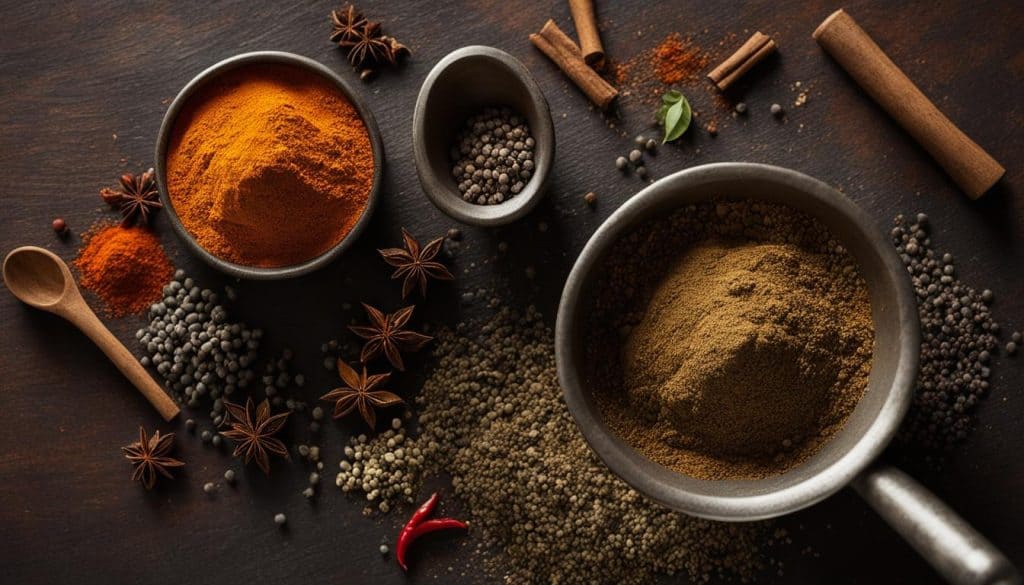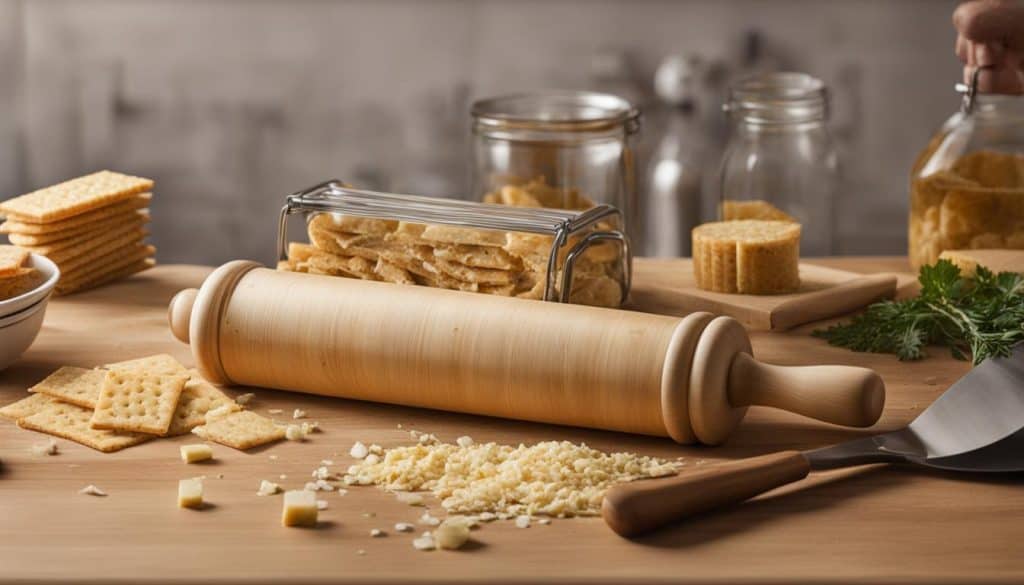Blenders, knives, and food choppers are top alternatives to a food processor, offering versatility and precision in chopping, blending, and mixing tasks. These tools provide efficient and effective substitutes for a food processor, catering to various cooking needs and recipes
Blender to the Rescue (Sometimes)
Blenders can be a lifesaver when it comes to making smoothies, sauces, and purees. Though they may not be as versatile as food processors, they can still perform a variety of chopping, blending, and mixing tasks.
However, keep in mind that blenders require a reasonable amount of liquid to function efficiently, so dry chopping may not always be possible.
If you are looking to make silky-smooth smoothies or creamy sauces, a blender can be a great substitute for a food processor. Experiment with different ingredients and test out the blender’s capabilities to find the perfect consistency for your recipe.
When using a blender, remember to add enough liquid to ensure proper blending. Otherwise, you may end up with chunks of unblended ingredients. Quick tip: Start with a small amount of liquid and gradually increase it until you reach the desired consistency.
Blender Tips and Tricks:
- Add a splash of citrus juice to your smoothies to give them an extra burst of flavor.
- Freeze your fruit beforehand to achieve a thicker, creamier smoothie.
- For the ultimate sauce or puree, blend the ingredients in small batches to ensure everything is evenly mixed.
- Use the pulse function on your blender to get the perfect texture for chopping nuts or herbs.
Chop Like a Master
Sometimes, the simplest tools are the most effective. With a sharp chef’s knife and a cutting board, you can tackle most chopping tasks with ease. Though it may require a bit more effort, the satisfaction of perfectly diced vegetables is unmatched.

If you’re not already using a chef’s knife, it’s worth investing in a good-quality one. Look for a blade that’s between 8-10 inches long with a comfortable grip. When using a cutting board, make sure it’s sturdy and won’t slip.
For best results, choose the right knife for the job. A serrated knife is best for slicing bread, while a paring knife is perfect for peeling fruits and vegetables. If you’re chopping herbs, a mezzaluna knife can make the job easier.
Keep your knife sharp for effortless chopping. Use a honing rod regularly to maintain the blade’s edge, and sharpen it with a whetstone as needed.
Cutting Board Maintenance Tips
Once you’ve invested in a good-quality cutting board, take care of it properly. Here are some tips:
- Wash your cutting board with hot, soapy water after each use
- Sanitize your cutting board by wiping it down with a solution of 1 tablespoon of bleach to 1 gallon of water
- Avoid using harsh chemicals or abrasive sponges on your cutting board
- Replace your cutting board when it becomes too worn or develops deep grooves
By using a chef’s knife and cutting board, you can hone your chopping skills and become a master in the kitchen. Plus, you’ll have the satisfaction of creating perfectly diced vegetables for your next meal.
Food Chopper: Mini Marvel
When it comes to quick and easy chopping, a food chopper can be a game-changer. Unlike a bulky food processor, a food chopper is smaller, more affordable, and perfect for small batches of vegetables, herbs, and nuts.
With a food chopper, you don’t have to worry about the extensive chopping, making it a reliable tool for busy cooks. Plus, it offers enough precision to tackle finely chopped ingredients for your favorite recipes.
Whether you want to add some crunch to your salad with chopped nuts or add some fresh herbs to your pasta sauce, a food chopper is up to the task.
Chopping Nuts and Herbs
If you’re tired of hand chopping nuts, a food chopper will save you time and effort. Add your nuts into the chopper, push the button, and voila! You’ve got perfectly chopped nuts for your favorite recipe.
Similarly, fresh herbs can be easily chopped with this mini marvel, adding flavor and aroma to your dishes.
Small Batches of Vegetables
Sometimes, you only need to chop a small amount of vegetables for your recipe, and a food processor is not worth the effort. With a food chopper, you can easily chop a small number of vegetables like onions, garlic, or carrots without the need for a larger machine.
A food chopper is a reliable and easy tool to use in the kitchen for efficient and effortless chopping.
The Verdict
Overall, a food chopper is a versatile tool that can make your life easier in the kitchen. It’s perfect for small tasks like chopping nuts, herbs, and small batches of vegetables, providing convenience without sacrificing precision. Give it a try and elevate your cooking game with this mini marvel.
Mortar and Pestle: The Grind Kings
Looking for an authentic and hands-on approach to grinding spices and nuts? The mortar and pestle are your solution to releasing maximum flavors and testing your strength at the same time.
While the mechanical food processor can make work easier and faster, using a mortar and pestle can make cooking more personal and rewarding. Not only can you control the coarseness of the grind, but you also expose your ingredients to far less heat than in mechanical grinding, keeping flavors and aromas intact.
Of course, it requires a bit of elbow grease, but the result is satisfying, and it’s a great way to incorporate some exercise into your cooking routine. The process is simple but effective: place your spices, nuts, or seeds in the mortar, and use the pestle to grind them manually.
The size of the mortar and pestle will impact the amount of ingredients you can work with in each batch. Since this method doesn’t require electricity or much space, it’s a great option for small kitchens or camping trips.
To ensure that you don’t damage your mortar and pestle, only use it for grinding dry materials. Clean it carefully with a soft brush or cloth, and avoid using soap.
For optimal results, consider dedicating a mortar and pestle to specific ingredients to eliminate any cross-flavor contamination.

Mixing it Up
If you own a stand mixer, you may be surprised at its range of capabilities beyond just making doughs and batters. With the attachment options available, it can also be used for a variety of chopping, s edding, and grinding tasks, making it a versatile substitute for a food processor.
For wet batters and doughs, simply switch to the paddle attachment and let the mixer do the work for you.
Additionally, depending on the model, you may be able to use attachments for s edding cheese and grinding coffee beans, among other things.
Pro tip: To make sure your stand mixer is working effectively, always be sure to match the attachment to the task at hand.

Stand Mixer Attachment Options
| Attachment | Task |
|---|---|
| Paddle | Wet batters, doughs |
| Whisk | Egg whites, whipped cream |
| Hook | Bread doughs, pizza doughs |
| Food Grinder | Meats, cheeses |
| Cheese Grater | Cheeses |
| Coffee Grinder | Coffee beans, spices |
Beyond the Usual Suspects
It’s time to get creative in the kitchen with alternative tools. Whether you’re on a tight budget or simply looking for new kitchen hacks, these tools can help you tackle different tasks with ease.
First up is the rolling pin and a bag trick. Instead of using a food processor to crush crackers for breading, place them in a bag and use a rolling pin to crush them to the desired size. This method is not only effective but also great for relieving stress!
For s edding cheese and grating vegetables, a box grater can be a great substitute for a food processor. It doesn’t require electricity or any fancy settings. Just use the side of the grater that suits your needs and s ed away.
Another tool that can come in handy is the potato masher. While it’s commonly used for mashing potatoes, it can also be a great tool for pureeing soft ingredients such as avocados or bananas.
Don’t be afraid to explore new culinary avenues with alternative tools such as these.

Cooking Hack:
For pureeing soft ingredients with a potato masher, dip the masher in hot water before use. This will make the masher glide t ough the ingredients more smoothly.
Embrace the Improvisation
When it comes to cooking, it’s not always about following the recipe to the letter. Cooking is an art, not a science, so don’t be afraid to adapt and substitute as needed.
Experiment with different tools and techniques in the kitchen to discover new flavors and textures, and don’t be afraid to make mistakes along the way. After all, some of the greatest kitchen hacks are discovered t ough trial and error.
When you embrace improvisation in the kitchen, you open up a world of possibilities. You might find that a certain ingredient or tool can be substituted for another, or that a unique cooking method can enhance the flavors of your dish. The key is to approach cooking with an open mind and a willingness to try new things.
Remember, cooking is both an art and a science. While certain techniques and measurements are important, don’t be afraid to play with them to achieve your desired result. Adapt to the ingredients and tools you have on hand, and you might be surprised by the delicious dishes you can create.
So go ahead, experiment with different spices, try out a new cooking method, or substitute an ingredient in your go-to recipe. Who knows, you might just stumble upon your new favorite kitchen hack.


